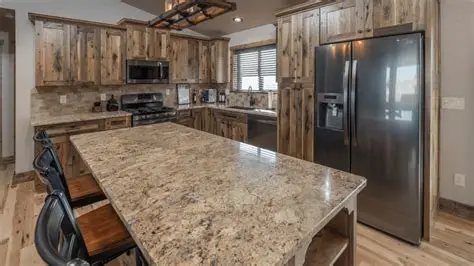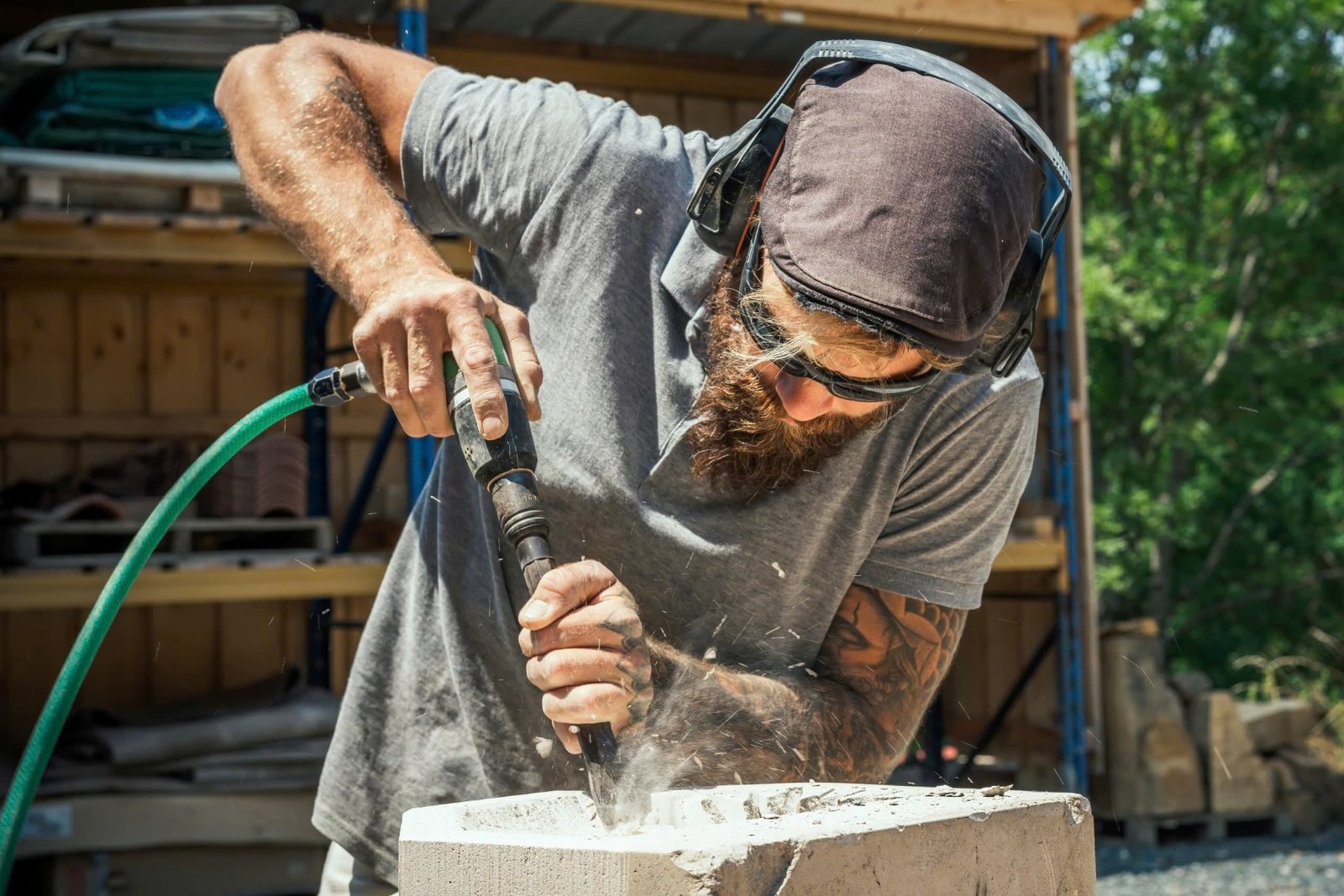
Sealing your granite countertops is one of the most essential steps in preserving their natural beauty and resilience.
Sealing your granite countertops is one of the most essential steps in preserving their natural beauty and resilience. But a question that often comes up for homeowners is: How long do you have to wait after sealing granite countertops before using them? Whether you’ve installed granite kitchen countertops, granite bathroom countertops, or even granite countertops for outdoor kitchens, understanding the curing timeline is crucial.
In this guide, we’ll break down the sealing process, explain drying vs. curing time, discuss how long to wait after sealing granite, and offer maintenance tips to ensure your stone stays protected for years.

Why Sealing Granite Countertops Matters
Granite is a porous natural stone, which means it can absorb liquids and oils that cause staining and bacterial growth. Sealing creates an invisible barrier that protects your investment, especially in areas prone to spills and moisture like:
- White granite countertops
- Brown granite countertops
- Black granite countertops
- Blue pearl granite countertops
Sealing also enhances the color and texture of your polished granite countertops or honed granite countertops, and helps maintain their shine.
Curious about quartz? Read What Are Quartz Countertops?

How Long to Wait After Sealing Granite Countertops
⏱️ Drying Time vs. Curing Time
It’s important to differentiate between drying and curing:
- Drying Time: The surface will feel dry to the touch within 2–4 hours after sealing.
- Curing Time: This is the full time it takes for the sealer to bond and penetrate the stone, which can take 24 to 48 hours depending on the product used and environmental conditions.
During curing, it’s crucial to avoid placing items on the surface and keep the area free of spills.
🕒 How Long Before You Can Use Your Countertops Again?
- Light use (placing items): Wait at least 4–6 hours.
- Full use (cooking, cleaning, etc.): Wait a minimum of 24 hours, ideally 48 hours to be safe.
🧽 Need to seal your granite? Learn How to Seal Granite Countertops
Factors That Affect Granite Sealer Curing Time
Several conditions can speed up or slow down the curing process:
🌡️ Temperature & Humidity
- Ideal temperature for curing is between 60°F and 80°F (15°C to 27°C).
- High humidity can delay curing time.
💨 Ventilation
Proper airflow helps solvents in the sealer evaporate faster, allowing the curing process to complete more efficiently.
🧴 Type of Sealer
- Solvent-based sealers generally cure faster but may have stronger fumes.
- Water-based sealers are eco-friendly but may take longer to cure fully.
Signs the Sealer Has Fully Cured
You can do a simple water test to verify if the granite countertop sealer has cured:
- Sprinkle a few drops of water on the surface.
- Wait 5–10 minutes.
- If the water beads up and does not darken the granite, the seal is intact.
Tips to Follow Immediately After Sealing
- Do not clean with water or chemicals for at least 24 hours.
- Avoid placing hot pans on the surface for 48 hours.
- Do not cover the countertop with plastic or appliances until fully cured.
- Use coasters for drinks and avoid cutting directly on the surface during the first two days.
Planning to lift heavy slabs? Check out Paver Lifter
How Often Should You Seal Granite Countertops?
Depending on your countertop’s location and color, sealing frequency can vary:
| Countertop Type | Sealing Frequency |
|---|---|
| Granite kitchen countertops | Every 12–18 months |
| Granite bathroom countertops | Every 2–3 years |
| Outdoor granite countertops | Every 6–12 months |
| Polished granite countertops | Every 1–2 years |
| Honed granite countertops | Annually |
Related: Quartz vs. Granite Cost Comparison?
Are Granite Countertops Still Popular in 2025?
Absolutely! Granite continues to be one of the best granite countertops for kitchens and bathrooms thanks to its:
- Durability and resistance to heat
- Unique natural stone beauty
- Compatibility with white cabinets, modern kitchen designs, and rustic aesthetics
With the wide availability of colors, such as black, white, blue pearl, and brown granite, there’s a style to suit every home.
Maintenance Tips After Sealing
To extend the life of your sealed granite countertops:
- Use pH-neutral cleaners or just mild soap and warm water.
- Avoid harsh chemicals like vinegar, bleach, or ammonia.
- Clean spills immediately, especially oils and wine.
- Avoid abrasive scrubbers or pads.
Learn more: How Are Quartz Countertops Made?
Common Questions About Granite Sealer Cure Times
❓Can I Cook on Granite Countertops the Same Day I Seal Them?
No. Wait at least 24 hours before placing hot pans or preparing food directly on sealed granite.
❓Can I Speed Up the Curing Process?
Yes. Improve airflow with fans and maintain an ideal indoor temperature. Do not expose the surface to moisture or pressure during curing.
❓What If I Accidentally Use It Before It’s Cured?
You may compromise the seal. If that happens, clean the surface and reseal the area again to ensure proper protection.
Conclusion: Patience Is Key
When it comes to sealing granite countertops, patience pays off. Waiting the appropriate time after sealing ensures a proper cure, maximizing protection, shine, and durability. For long-lasting granite kitchen countertops, bathroom surfaces, and outdoor countertops, always follow manufacturer recommendations on curing and sealing.
By understanding how long to wait after sealing granite, you can keep your countertops looking brand new—and functional—for decades to come.

